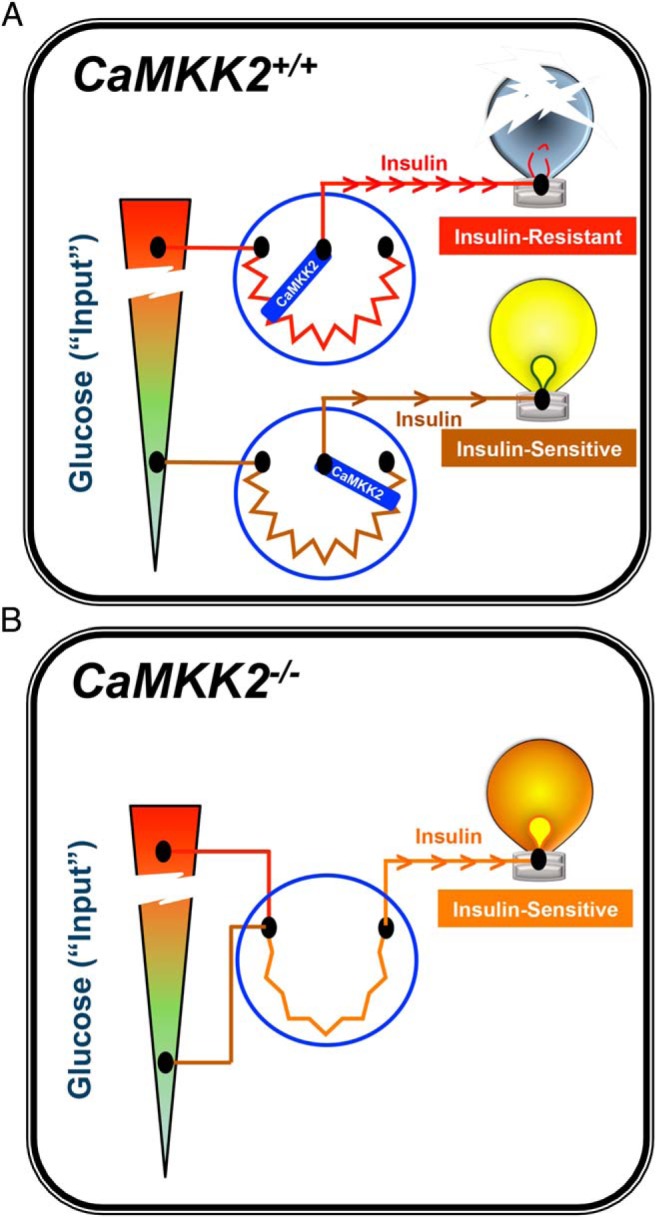Figure 7.

Model summarizing the role of CaMKK2 as a molecular rheostat for insulin action. A, CaMKK2+/+ mice respond to overnutrition by overcompensating production and secretion of insulin due to elevated glucose levels. CaMKK2 is an integral component of the molecular mechanism in pancreatic β-cells whereby increasing demand for insulin leads to insulin resistance, glucose intolerance, and inevitably gives rise to type 2 diabetes (symbolized by the burnt out light bulb). B, In contrast, CaMKK2−/− mice generate higher, yet steady state levels of insulin (still within the physiological range) even upon exposure to overnutrition. Ablation of CaMKK2 renders insulin-producing pancreatic β-cells more acutely responsive to glucose while simultaneously conferring improved insulin sensitivity to peripheral metabolic tissues. Our findings support the notion that inhibitors of CaMKK2 may serve as therapeutic agents for combatting diet-induced insulin resistance.
